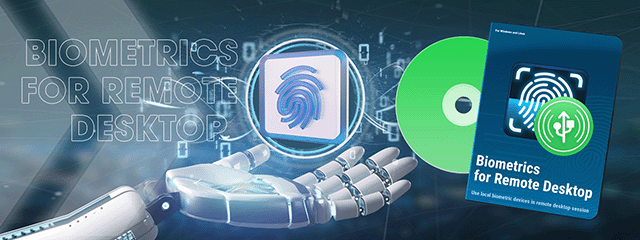
Biometrics for Remote Desktop
There are various problems associated with remote desktops. SSL certificate issues, DNS concerns, and insufficient permissions are the most stringent questions. The truth is that you should be worried about more than just RDP vulnerabilities. Cybercriminals find it simple to break into a remote connection. It’s a piece of cake if RD has a weak password.
To steer clear of these issues, you may opt for biometrics for remote desktops. Selecting the appropriate biometrics for remote desktop access, like Fingerprint Reader RDP, is essential. With this device, you may guarantee safe and easy authentication procedures. It provides robust identity verification and works well with remote desktop solutions. If you use well-trusted software, you avoid unwanted access. HighFigure offers the best-in-class software that works seamlessly with all biometrics for RD devices.
Understanding Biometrics RDP
Biometrics for Remote Desktop helps redirect locally inserted biometric sensors to a remote desktop session. Using biometric devices in a remote desktop environment is typically challenging. Usually, you would need to employ several intricate workarounds. Nevertheless, today, it’s possible to use one software to guarantee your desktop security. This software supports scanners, printers, keyboards, Bluetooth adapters, and other USB devices. Let’s touch on primary biometrics RDP types:
The modern fingerprint scanner RDP helps you aim for better security. Moreover, it gives you a chance to use the Terminal Server environment even without having USB device drivers.
Benefits of Biometrics for Remote Desktop
Biometrics for RD is something that can significantly spruce up security in the workplace. Let’s look at the primary positive sides of using this software:
To cap it all, biometrics for remote desktops can be a nice addition to your company’s security. Moreover, with only one mouse click, biometric scanners may be redirected to a remote Windows session.
Factors to Consider When Choosing Biometric Devices
With a great abundance of biometric device choices, it might be hard to select the best one. Keep in mind these factors when deciding on a product.
Accuracy and Reliability
Accuracy is one of the most crucial factors to consider when selecting a biometric device. Error rate, false acceptance rate (FAR), and identification rate are some factors that determine how good the product is.
Compatibility with Remote Desktop Platforms
Think about how your network will incorporate the biometric system. It has to be adaptable to different remote desktop platforms. It helps maintain a consistent user experience. Users should be able to utilize biometrics authentication consistently, whether accessing remote desktops from Windows, macOS, or other operating systems.
Scalability
Think about how the system will scale and upgrade in the future. The design should be able to adapt to changing demands and advances in biometric technologies without needing a total redesign as your company expands or technology advances.
Integration Capabilities
Determine whether the solution is compatible with the security ecosystem and your current infrastructure. You may need to combine biometric authentication with other factors like passwords or smart cards. Moreover, ensure the product is compatible with RDPs like Microsoft’s Remote Desktop Protocol.
User-Friendly Interface
The use of fingerprint scanners in remote desktop should be easy for your employees. Both administrators and end users should have as little of a learning curve as possible. The system must have a simple and user-friendly design. Moreover, consider aspects like UX and quickness of registration.
Cost Considerations
Organizations must carefully think over the initial investment and ongoing maintenance expenses. It’s essential to assess the total cost of ownership. It’ll ensure the solution complies with financial constraints and offers sustainable value over time.
Today, you can get around issues like unprotected ports and weak passwords. It’s possible thanks to biometrics, which strengthens remote desktop security. The biometrics for RD offer increased security and user convenience. You don’t have to rely on passwords. You may simply use fingerprint, face, voice, and behavioral identification. Ultimately, HighFigure product is a safe, effective, and economical solution that works in tune with various biometrics for RD devices.